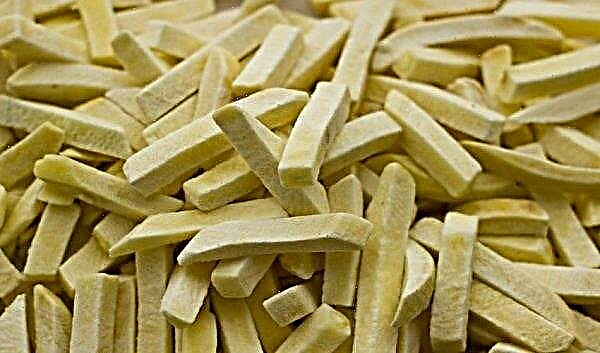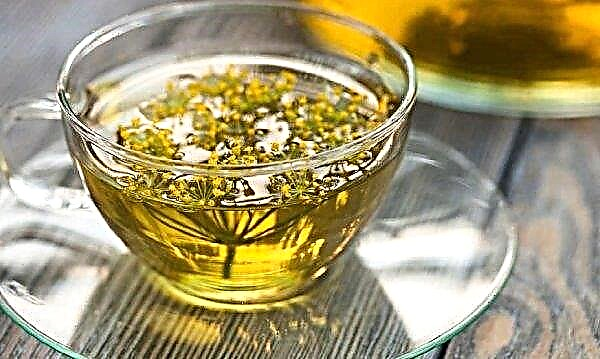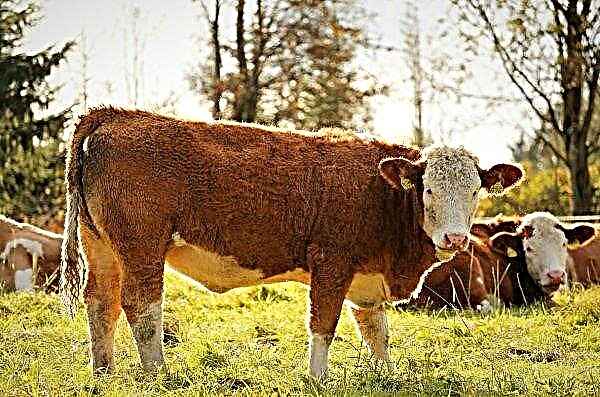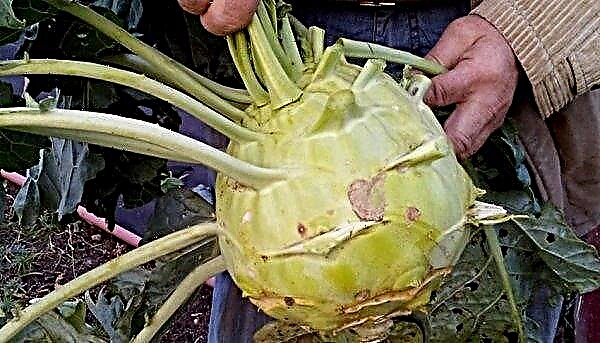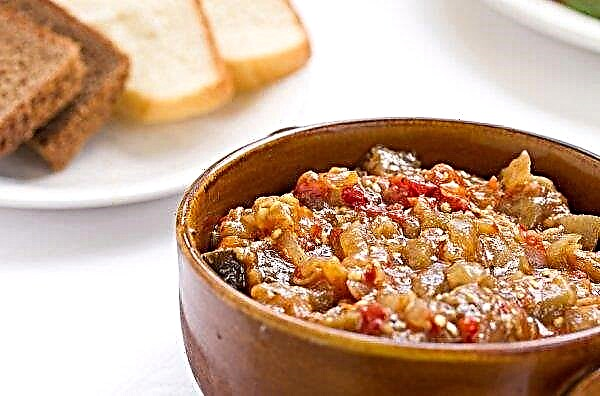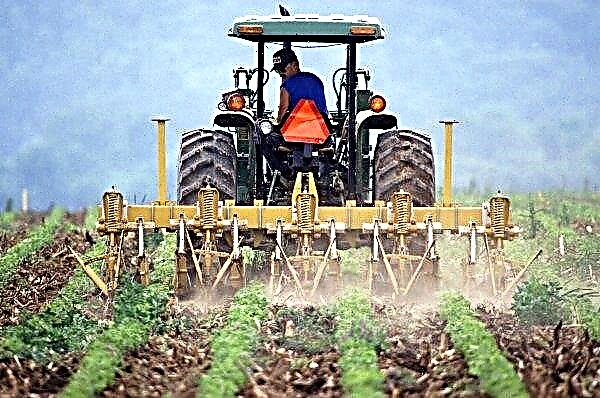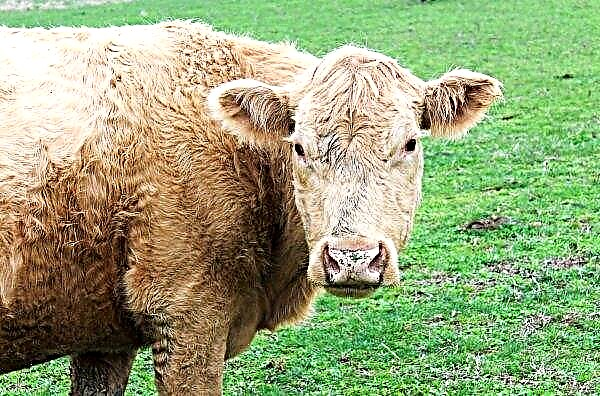To obtain optimal potato yields, it is important to choose the right variety. In order not to make a mistake with the choice, it is worth learning about each of the varieties for more factual information. This review is dedicated to the Lasunok variety, bred by Belarusian breeders over 40 years ago.
Origin history
The variety was created in Belarus in 1988. The aim of the selection was to obtain a variety with high palatability, resistant to disease and suitable for cultivation in any region of the temperate climatic zone.
Important! After 3–For 4 years, tubers of any variety degenerate and can no longer produce the crop declared initially, so the seed fund must be updated periodically.
Characteristic and Description
During its existence, the variety received the epithet "classic". It has all the properties that may be of interest to the end user:
- high productivity (up to 60 t / ha) - interesting for private farmers and agricultural companies.
- excellent taste, high starchiness (22%) make it popular among the population and public catering enterprises.
The sucker is a late-ripening variety. He will give you a harvest 3-4 months after planting in the ground, approximately 100-120 days. The first number in the range indicates the date from which you can start digging new potatoes, and the second indicates the date of harvest.
Tuber Characteristic:
- tubers are large, equal in size, oval, weighing up to 200 g;
- the flesh is white;
- peel of a uniform, light cream color.
 The excellent taste of tubers and friability make it ideal for casseroles, stews, mashed potatoes. As a puree, it does not darken. The starch content is about 22%. Unfortunately, the Sucker cannot be stored for a long time, therefore it is suitable only for autumn consumption. Tubers can wake up early due to high temperature - above +5 ° С.
The excellent taste of tubers and friability make it ideal for casseroles, stews, mashed potatoes. As a puree, it does not darken. The starch content is about 22%. Unfortunately, the Sucker cannot be stored for a long time, therefore it is suitable only for autumn consumption. Tubers can wake up early due to high temperature - above +5 ° С.The weight of the average tuber is 200 g. From one bush you can get 10-12 tubers. Productivity per hectare - 400-450 c. Suitable for growing in central and even northern regions. Bushes are tall, powerful, upright. Flowers are white, slightly terry. The sucker is resistant to late blight, nematode, scab, black leg.
Advantages and disadvantages of the variety
- Grade advantages:
- high productivity;
- commodity appearance;
- pleasant taste, friability and good digestibility;
- disease resistance;
- can grow on any soil and in any climate zone, including the northern regions.
- The disadvantages of the variety:
- medium storage - can be stored only a few months;
- tubers can “wake up” and germinate if the temperature exceeds +5 ° C.
Planting potatoes
Planting potatoes includes:
- preparation of seed material;
- presowing soil preparation;
- landing.
Seed material needs to be prepared. The tubers sprout themselves or they sprout. To increase the amount of material, potatoes can be cut into several parts. In this case, keep in mind that the more eyes there are on the potato, the more sprouts and the stronger the bush will turn out. This will provide a high level of yield.
Did you know? Varieties with red peel are always more light. But the cream-colored varieties have excellent taste, but are stored much worse.
Dig up the soil and fertilize. Root crops need loose soil for the good development of the root system. And since tubers are thickened roots, the absence of stones or large clods of earth in the soil will help to get them even and without deformation.
The potato tolerates cool weather well - from +7 to +13 ° C, therefore, planting is carried out when the air temperature reaches these indicators. Perhaps it will be March. You can continue landing until the third decade of April. Be sure to keep in mind that spring frosts should end by this time. The sucker is not declared as a frost-resistant variety and may die due to frost and moist cold soil.
Soil requirements
The root system of potatoes develops better on loose soils. If the site is clay and there is no way to change the structure, then be sure to carefully dig and loosen it. To enhance looseness, sand, peat or other bulk materials are added.
A tuber is a thickening of the root, a kind of storehouse of nutrients, so the development of potatoes depends on the nutritional value of the soil. Top dressing can be organic - compost, rotted manure, leaf soil, etc., or inorganic - from store fertilizers. Plants need nitrogen, phosphorus and potash fertilizers.
Did you know? Mid-season and late potatoes are more suitable for storage than early varieties. They have a denser skin, high resistance to fungal diseases and rot.
The required acidity level is 5.5 to 7 pH. If the soil is more acidic, make dolomite flour, lime or chalk for deoxidation. On acidic soil, the plants turn out to be weak, and the yield is low, and the incidence of rotting of potatoes increases. Add deoxidizing agent 1–2 weeks before planting.
For lime, the application rate will be as follows (g / sq. M):
- slightly acid soil reaction - 300 g;
- medium acid - 400 g;
- acidic soil - 500 g.
Disinfection begins in the fall by deep digging. So you reduce the number of wintering pests by lifting them closer to the freezing point.
Preparing planting material
Prepare planting material in February. Whole tubers are sprouted or divided into parts. Each piece should have a minimum of 2-3 eyes, but it is better if there are 4-5 of them. It strengthens your bush and increases productivity.
To prevent infection of the tuber with phytopathogens, the incision sites are treated with ash and dried for 2-3 days. The air temperature in the room should be about + 14 ° C, and air humidity - about 80–90%. Germination duration is 2-3 weeks, so if planting is planned for late March, begin germination at the beginning of the month.
Important! If the tubers are exposed to direct sunlight for some time, then the plant poison accumulates in the peel. — solanine. It is dangerous for both people and animals. In humans, it will cause an intestinal upset, but a pet may die.
Landing technology
Landing consists of preparing a seat (pit or trench), fertilizing and placing seed.
Landing Instructions:
- They dig a trench with a depth of about 0.2-0.3 m. The bottom of the trench should consist of fairly loose soil.
- Potatoes are laid on it with a distance of 25–40 cm between them. The distance between tubers can be the smaller, the greater the distance between individual trenches. Normally, it is 0.4-0.5 m.
- Tubers are covered with soil mixed with fertilizers. For rotted manure, the norm is 2-3 bucket per 1 square. m of soil. Manure provides tubers with potassium necessary for the formation of starch.
- Add 300 g of urea to the mixture to provide the tubers with enough nitrogen.
- Cover the trench with ordinary soil.
If part of the soil does not fit in the trench, then it is left next to it in order to carry out the earthing up. 2 weeks after planting, loosening is carried out, the first hilling and covering of the plantings with mulching material.
Video: planting potatoes
Care Features
Potatoes do not require too warm weather. It is enough that the temperature was above + 14 ° C. At the stage of germination, potatoes are not needed for watering - there will be enough spring moisture. 2 weeks after planting, when the stems reach a height of 10-15 cm, carry out the first hilling. This is an increase in the earth embankment around the bush in order to increase the volume of the root system. Since tubers are thickened parts of the root, the larger the root system, the better the yield.
- Additional advantages of hilling:
- potatoes are less affected by leaf pests;
- increased tuberization area;
- there is stimulation of the growth and development of the bush.
The second hilling is carried out during flowering. Tuberization is believed to occur precisely at the time of flowering, but this rule does not apply to all varieties. Spud potatoes after flowering is not necessary. The hilling process can be combined with loosening the soil. This allows you to remove weeds and enhance soil aeration. But the same results can be achieved if you cover the planting with mulch.
This preserves ground moisture, protects plants from pests, prevents the growth of weeds. Potatoes are watered 2-3 times a week. If the site is located in a lowland, then you can reduce the number of irrigations, and if on a sunny site, then increase. If the soil has dried out by 5 cm, it means that it is worth watering the crops. Even watering ensures the development of uniform tubers.
Growing potatoes requires a lot of potassium and nitrogen in the soil. An excellent supplier of potassium will be manure (5-10 kg per 1 sq. M). Potassium is essential for starch accumulation in tubers. It also improves shelf life and reduces damage to tubers. Nitrogen is relevant in the first 50 days of plant development.
The application volume is from 80 to 140 kg / ha. During the growing season, organic farmers add bone meal and algae extract or manure to the soil every 2-3 weeks. This is important between the emergence of seedlings and before flowering. Like other plants, pests attack potato crops. It can be Colorado beetles, potato flea, aphids, wireworms. Insecticides are used against leaf pests. Of the chemical preparations, Fitoverm, Aktaru, and other drugs are used in accordance with the instructions on the package.
Like other plants, pests attack potato crops. It can be Colorado beetles, potato flea, aphids, wireworms. Insecticides are used against leaf pests. Of the chemical preparations, Fitoverm, Aktaru, and other drugs are used in accordance with the instructions on the package.
The fight against aphids consists in processing crops with a soapy solution of insecticidal soap. To combat ground pests, special baits are laid out, and planting material is processed before planting.
The work of phytopathogens is manifested in the form of spots on leaves, plaque, wilting of leaves, falling of ovaries. Most phytopathogens enter the plant as a result of damage by pests. The spread of spores and fungi can take no more than a few days. In the characteristics of the Lasunok variety, it is indicated that it is resistant to almost all major diseases: scab, late blight, black leg and others.
So, it is enough to carry out preventive measures:
- comply with crop rotation rules;
- plant healthy tubers;
- treat them before planting with fungicides, which will inhibit the development of putrefactive fungi;
- destroy infected plants no less than 3 m from potato crops;
- Do not leave the remains of tops in the beds to exclude the wintering of pests in them.
Harvesting and storage
Harvesting varieties Lasunok is possible 100-120 days after planting. The main sign of potato readiness is the drying of the stems. After this, the tubers need another 2 weeks to strengthen the peel and prepare for further storage.
Harvesting is carried out in sunny weather. If it has recently rained, then the dug up tubers must be dried before storage. The sucker is characterized as a variety with medium keeping quality. Store the harvested potatoes in a cool, dry room at a temperature of about + 5 ° C and humidity not higher than 65%.
Care of the variety Lasunok is not difficult - it is enough to just water, earthing up and top dressing in a timely manner. And its productivity and resistance to diseases serve as additional advantages for its choice for the purpose of growing on the site. The sucker can be recommended for cultivation both in private households and for farmers.


